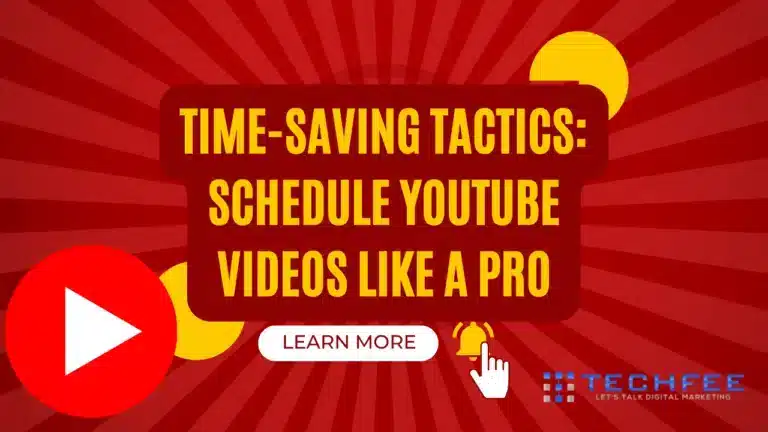Hi,
Are you new to Digital Marketing Industry?
Having difficulties growing your Digital Marketing Skills or Making Money Online?
No worries!
Our website provides Valuable Insights, Expert Advice, Techniques, Tools, Latest Digital Marketing and Blogging Trends.
Join our community of like-minded professionals and gain access to a wealth of knowledge that will empower your online endeavors.
Whether you’re a seasoned marketer or just starting, our blog is your go-to resource for staying ahead of the game. Please stay connected with us and unlock a treasure trove of engaging and informative content. Our team of industry experts is dedicated to providing you with actionable tips, strategies, and case studies that will help you skyrocket your online success.
Let’s learn and earn together!
I HAVE BEEN IN THE DIGITAL MARKETING INDUSTRY FOR MORE THAN SEVEN YEARS AND HAVE HELPED SEVERAL CLIENTS GROW THEIR BUSINESSES THROUGH MY FREELANCING SERVICES. NOW, I WILL SHARE THOSE REAL EXPERIENCES HERE IN MY BLOGS, WHERE YOU CAN LEARN DIGITAL MARKETING TRENDS, EXPERT TIPS ANDSTRATEGIES, AND HOW TO BLOG ETC.

About Me
My name is Md Afraz Alam. I am a full-time Digital Marketing Professional, Blogger, Self-learner, and Marketing Research Analyst.
Talking about my educational background, I passed my graduation (Bachelor of Arts) from IGNOU and completed my MBA in Marketing from Sikkim Manipal University.
My Experience
I am not a guru or business superior, but I can do large-scale digital marketing and build a profitable blog.
I have seen many ups and downs in my digital marketing career from 2014 to 2024, and I can share with you all the best practices and productive strategies I use for my blog and website.
Other than this,
- Controlling and evaluating the organization’s fundraising plans and capital structure.
- Driving the company’s financial planning and analyzing the organization’s liabilities & investments.
- Proposing and managing marketing research projects to generate consumer insights in support of improved marketing strategy and communications.
- Building marketing strategies to support specific marketing objectives across different channels.
2018-2024
Digital Marketing Consultant
@Startup Idols. Have been working for this company since 2018 and helping clients to grow their businesses with effective digital marketing services.
2017-2018
Digital Marketing Executive
@A1 Future Technology. Did a full-time digital marketing job where I worked on different industry projects.
2016-2017
Online Marketing Strategiest
@Compete Infotech Academy. Did certification and started for the same academy to improve my skills.
2014-2016
My Recent Posts

Is Affiliate Marketing a Pyramid Scheme? Unveiling the Truth in This Depth Analysis
Affiliate marketing is often seen as an exciting opportunity in this digital age, where there are many ways to make

Mastering the Art of Starting an SEO Business in 2024
Are you excited to learn How to Start an SEO Business? Initiating your SEO business journey in the dynamic landscape 2024

Unlocking The Path to Digital Marketing Success: From Novice to Pro
A question that keeps coming up in the vast world of digital marketing is “How to get into digital marketing?”

Unveiling the 27 Best SEO Strategies for Organic Traffic Surge in 2024
Even though digital marketing is always changing, getting pure traffic is still the most important thing for online businesses that

Mastering YouTube Video Scheduling: The Ultimate Guide to Dominating YouTube
YouTube video makers compete for viewers’ attention in the vast digital world. Learning How to Schedule a YouTube Video can make the

How can Microsoft PowerApps and Power BI Elevate Your Business Success
Microsoft PowerApps and Power BI are two essential segments of Power Platform that have transformed how businesses function. PowerApps allows

Unleash the Power of Disavowing Bad Links: A Comprehensive Guide to Elevate Your SEO Strategy
When it comes to SEO, knowing How to Disavow Bad Links can make the difference between going down or up in the

Unlocking Profitable the Best 9 Traffic Arbitrage Techniques: Insider Secrets for Success
Picture yourself in a busy market where lots of people are looking at different things. There is a cool item

Don’t Miss These Next-Level Content Arbitrage Techniques in 2024
Today, we will step into digital entrepreneurship and unlock the potential of cutting-edge content arbitrage techniques. Imagine you’re in a bustling

What is the Digital Marketing Strategy that Tracks Users Across the Web?
If you want to understand deeply what is the digital marketing strategy that tracks users across the web, then you are

31 Game-Changing Best AI Tools for Small Businesses Owners, Marketers and Bloggers
Are you a small business owner looking to streamline operations and boost productivity? Wondering: What are the best AI tools for

Unlock the Web’s Hidden Gems: Discover the Jaw-Dropping Difference Between Static and Dynamic Websites
Do you know why some websites look like posters while others seem to adjust to what you want? This is

11 Key Differences Between WordPress.com and WordPress.org You Must Know
Have you ever wondered what the actual differences between WordPress.com and WordPress.org are? If you are a passionate content creator, blogger,

Unlock the Power of Structured Data in SEO for 2024 to Improve Rankings
Hey there, fellow digital enthusiasts! Ever wondered how the internet’s grand library gets organized? Remember the superhero music because the

Creative Email Newsletter Design Ideas That’ll Skyrocket Your Engagement
Ever feel like your emails are just lost in the crowd? Email marketers are all competing for attention in people’s

Mastering SEO for Blog Posts: Best Techniques You Should Not Miss
Have you ever wondered why some blogs shine brighter than others? It’s all about mastering special tricks called mastering SEO for
Digital Marketing
Sign up to get the latest Digital Marketing Trends, Marketing Strategies, Social Media Marketing, Email Marketing, Content Marketing, SEO (Search Engine Optimization), PPC (Pay-Per-Click) Advertising, Influencer Marketing, Video Marketing, Analytics and Metrics, E-commerce Marketing, Mobile Marketing, Marketing Automation, Voice Search Optimization, Artificial Intelligence in Marketing, Blogging ideas, Tech news & Reviews, and legal ways to generate income online.
Make Money
Whether you’re launching a new online venture or expanding an existing one, rest assured that you’ll find valuable resources, cutting-edge marketing strategies, and innovative ideas to help you maximize your earning potential. In the dynamic kingdom of Digital Marketing, 2023 presents many lucrative opportunities for generating income. From insightful articles to game-changing tactics, you’ll discover diverse methods to make money online. So, dive in and unlock the secrets to success in the digital landscape of this exciting era.
Digital Marketing Resources
You have landed at the right place for all digital marketing tips, tools, and resources packed with practical marketing strategies written by professionals.
Latest From The Tech News
I am delighted to present you with valuable insights and comprehensive research within the Tech News category. Prepare to delve into the captivating world of marketing strategies, digital advertising, and cutting-edge technology news.
Stay informed about the latest updates and emerging trends through detailed industry research and insightful reports specifically tailored to meet the needs of advertisers and brand marketers.
With this curated information collection, you’ll be equipped to make informed decisions and stay one step ahead in the dynamic realm of technology and marketing.

The Ultimate Guide to Help You How to Use OpenAI Chat GPT in 2024
Welcome to my ultimate guide that will help you how to use OpenAI Chat GPT in 2024! As digital marketers, freelancers, and online marketers, we must create compelling content quickly –

Ripple Achieves Significant Victory in SEC Lawsuit Involving XRP Cryptocurrency
Landmark Legal Victory for Ripple as U.S. Judge Rules in Favor of XRP Cryptocurrency In a significant development for the cryptocurrency industry, Ripple Labs Inc has been deemed not to
Deals & Coupons
You have landed at the right place for all digital marketing tips, tools, and resources packed with practical marketing strategies written by professionals.





